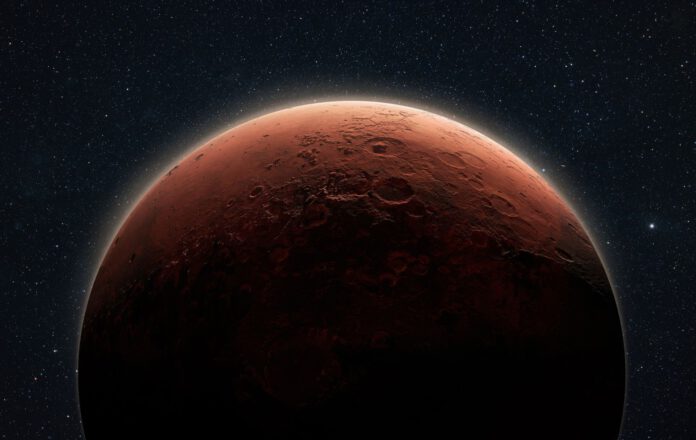
Astronomers have long suspected it, but can now finally confirm: the sky near Mars’ poles turns green at night. The green glow comes as good news for astronauts, particularly for those afraid of the dark.
The Green Glow’s Significance
The glow is so bright that astronauts – or even rovers – near the poles can easily navigate their way around the otherwise dark planet, even at night, according to researchers. This exciting finding was first reported in Nature Astronomy.
Mapping the Bioluminescence
So let’s take a step back to decipher the origins of this mysterious green glow. The story begins from the Mars’s side exposed to the sun, where carbon dioxide (CO2) molecules are floating in the atmosphere. As the sun’s light hits these molecules, they get so much energy that they break apart, forming luminescent oxygen atoms. “These oxygen atoms are then picked up by the wind and transported to the dark side of the planet where they react with each other and cause the green glow,” explains Lauriane Soret, one of the scientists who participated in the study.
Previous Sightings
This is the first time this ‘night glow’ has been observed within the spectrum of visible light. Although it was previously observed only in infrared light, green glowing oxygen atoms were first detected in the atmosphere in 2020 with the help of the Trace Gas Orbiter (TGO), but only on the daylight side of Mars. Now, thus, we understand how these oxygen atoms continue their journey.
One Step Closer to a Mars Landing
The discovery of night glow on Mars is of great scientific value as it provides revelations about the atmospheric processes taking place on this vermilion planet. It creates improved opportunities for research into areas of the planet’s atmosphere that are tricky to study and enables us to understand the amount of oxygen present in the atmosphere. It additionally gives insights into how sunlight and solar winds function.
The Importance of this Research
Furthermore, this research is of crucial importance in setting the stage for a successful landing on Mars. The lead researcher, Jean-Claude Gérard, is therefore delighted with the results: “These observations are unexpected and exciting for future trips to Mars.” For example, the density of the atmosphere directly affects how well a parachute works and the air resistance satellites encounter when they are in Mars’s atmosphere.
Final Note
And finally, when humans are ready to visit the Red Planet, they could also benefit from this in person. A heads up for future astronauts: if you want to experience a unique light show, head to the North or South Pole of Mars – and don’t forget to bring your folding chair along!











